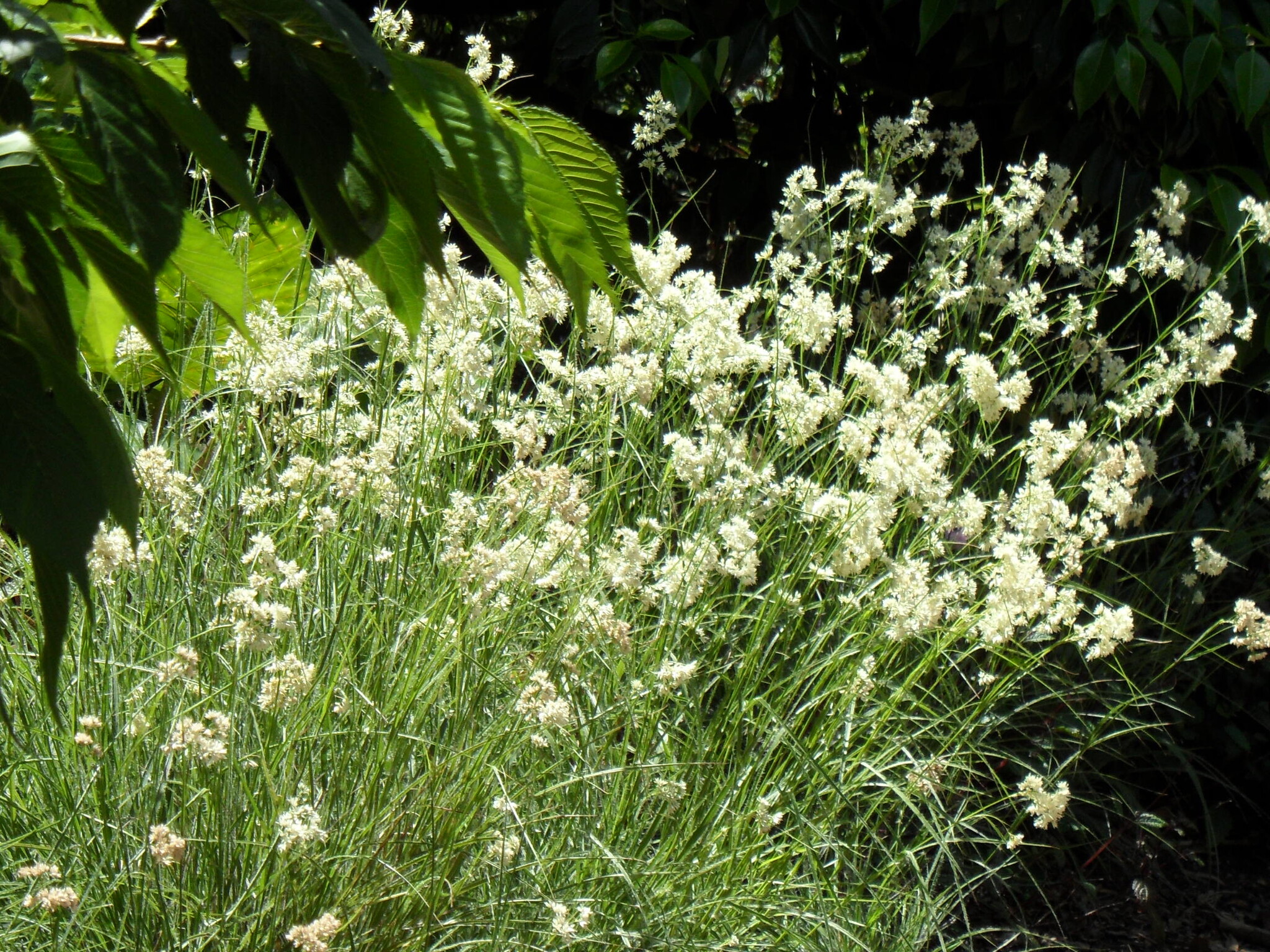
Perennial (rarely annual) grass-like herbs growing in damp habitats and with erect or creeping rhizomes. Stems cylindrical and solid. Leaves mostly basal, simple, entire, alternate, 3-ranked, flat to cylindrical, often narrow and grass-like with parallel veins and an open basal sheath. Flower clusters terminal, often appearing branched, corymbose or in heads. Flowers bisexual (occasionally the sexes separate and on the same or different plants), regular. Perianth of 6 green, reddish or black overlapping tepals. Stamens 3-6. Ovary superior, of 3 united carpels and with 1 (parietal placentation) or 3 (axile placentation) chambers each containing 1-many ovules. Stigmas 3, often brush-like. Fruit a 3-valved loculicidal capsule.
Recent research suggests that there are close affinities between this family and Cyperaceae.
Species of Juncus are used for craft products such as basketry and matting and as a source of fibre.
Superficially similar to grasses and sedges but differing in vegetative, floral and fruit characters. The fruit is a loculicidal capsule (an achene in sedges, caryopsis in grasses), the flower of 6 papery tepals (absent or of bristles or scales in sedges and reduced to 2(3) lodicules in grasses). Rushes generally have cylindrical stems filled with pith and cylindrical leaves that rarely have ligules.
7 genera and 430 species from damp habitats mostly temperate and often montane. Australia has 2 genera and about 83 species.
Source: (2005). Juncaceae. In: . Horticultural Flora of South-eastern Australia. Volume 5. Flowering plants. Monocotyledons. The identification of garden and cultivated plants. University of New South Wales Press.
